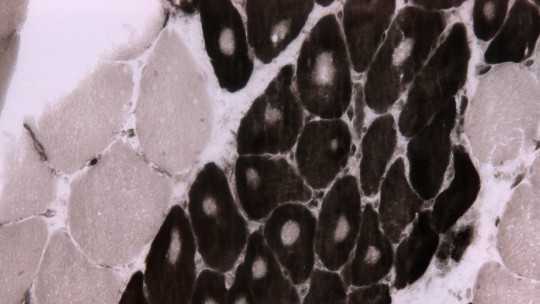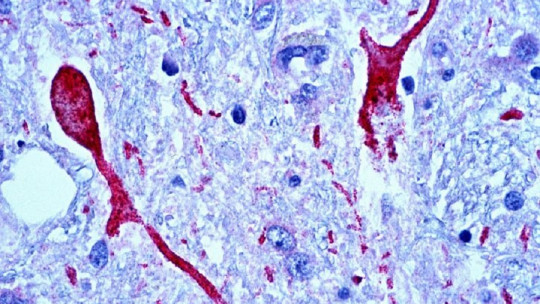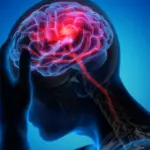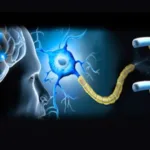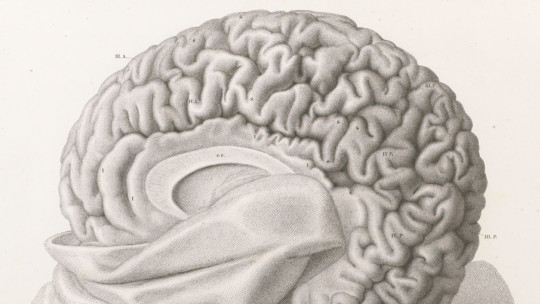
Despite its low incidence but great visibility, Amyotrophic Lateral Sclerosis is, along with many other neurodegenerative conditions, one of the greatest challenges that the scientific community faces. Since, although it was described for the first time in 1869, there is still very little knowledge about it.
Throughout this article we will talk about this disease, its main characteristics and the symptoms that distinguish it from other neuronal diseases. Likewise, we will describe its possible causes and the most effective treatment guidelines.
What is Amyotrophic Lateral Sclerosis or ALS?
Amyotrophic Lateral Sclerosis (ALS), also known as motor neuron disease, is one of the best-known neurodegenerative diseases worldwide. The reason is that famous personalities who suffer from it, such as scientist Stephen Hawking or baseball player Lou Gehrig, have given it great visibility.
Amyotrophic Lateral Sclerosis It is distinguished by causing a gradual decrease in the activity of motor cells or motoneurons, which end up stopping working and dying. These cells are responsible for controlling the movement of voluntary muscles. Therefore, when they die they cause the weakening and atrophy of these muscles.
This disease progresses gradually and degeneratively, which means that muscle strength declines little by little until patients suffer total paralysis of the body, which is accompanied by a decrease in inhibitory muscle control.
In most cases the patient is forced to remain in a wheelchair in a state of total dependence and the prognosis is usually fatal. However, despite this absolute loss of the ability to perform virtually any movement, ALS patients retain their sensitive, cognitive and intellectual abilities intact, since any brain function not related to motor skills remains immune to this neurodegeneration. In the same way, the control of eye movements, as well as the sphincter muscles, is preserved until the end of the person’s days.
Prevalence
The incidence of Amyotrophic Lateral Sclerosis is about two cases per year per 100,000 people belonging to the general population. In addition, it has been observed that ALS tends to affect certain groups of people to a greater extent, including soccer players and war veterans. However, the causes of this phenomenon have not yet been determined.
Regarding the characteristics of the population most likely to develop this disease, ALS usually appears to a greater extent in people between 40 and 70, and with much more common in men than in women although with nuances, as we will see.
What symptoms does it present?
The first symptoms of Amyotrophic Lateral Sclerosis are usually involuntary muscle contractions, muscle weakness in a specific limb or alterations in the ability to speak which, with the development of the disease, also affect the ability to move, eat or breathe. . Although these first symptoms may vary from one person to another, over time, The atrophy that affects the muscles results in a great loss of muscle mass and, consequently, body weight.
Furthermore, the development of the disease is not the same for all muscle groups. Sometimes, muscle degeneration in some parts of the body occurs very slowly, and can even stop and remain in a certain degree of disability.
As mentioned above, sensory, cognitive and intellectual capacities are fully preserved; as well as sphincter control and sexual functions. However, some people affected by ALS They may develop secondary psychological symptoms associated with the state in which they find themselves and of which they are fully aware, these symptoms are associated with alterations in affectivity such as emotional lability or depressive phases.
Although Amyotrophic Lateral Sclerosis is characterized by developing without causing any type of pain in the patient, the appearance of muscle spasms and progressive decrease in mobility They usually cause discomfort to the person. However, these discomforts can be alleviated with physical exercises and medication.
Causes
Although, at the moment, the causes of Amyotrophic Lateral Sclerosis have not been established with certainty, it is known that between 5 and 10% of cases are caused by an inherited genetic alteration
However, recent studies open up different possibilities when determining the possible causes of ALS:
1. Genetic alterations
According to researchers, there are a series of genetic mutations that can cause Amyotrophic Lateral Sclerosis, which cause the same symptoms as non-hereditary versions of the disease
2. Chemical imbalances
It has been proven that ALS patients tend to present abnormally high glutamate levels in which it can be toxic for certain types of neurons.
3. Alterations in immune responses
Another hypothesis is the one that relates ELA with a disorganized immune response As a consequence, the person’s immune system attacks the body’s own cells and causes neuronal death.
4. Poor protein administration
The abnormal formation of proteins found within nerve cells could generate a degradation and destruction of nerve cells
Risk factor’s
Regarding the risk factors traditionally associated with the appearance of Amyotrophic Lateral Sclerosis, the following are found.
Genetic heritage
People with one of their parents with ALS You have a 50% greater chance of developing the disease.
Sex
Before the age of 70, male sex is a higher risk factor for developing ALS. After 70, this difference disappears.
Age
The age range between 40 and 60 years is the most likely for the symptoms of this disease to appear.
Tobacco habits
Smoking is the most dangerous external risk factor when developing ALS. This risk increases in women from 45-50 years of age.
Exposure to environmental toxins
Some studies link the environmental toxins, such as lead or other toxic substances present in buildings and homes, to the development of ALS. However, this association has not yet been fully demonstrated.
Certain groups of people
As mentioned at the beginning of the article, there are certain specific groups of people with a greater tendency to develop ALS. Although the reasons have not yet been established, people who serve in the military are at increased risk for ALS; It is speculated that due to exposure to certain metals, injuries and intense effort
Treatment and prognosis of ALS
At the moment, an effective cure for amyotrophic lateral sclerosis has not been developed. Therefore, although treatments cannot reverse the effects of ALS, they can delay the development of symptoms, prevent complications, and improve patient quality of life Through intervention with groups of multidisciplinary specialists, a series of both physical and psychological treatments can be carried out.
By administering some specific medications such as riluzole or edaravone, the progression of the disease can be delayed, as well as reduce the deterioration in daily functions Unfortunately, these medications do not work in all cases and still have numerous side effects.
Regarding the rest of the consequences of Amyotrophic Lateral Sclerosis, symptomatic treatment has proven to be highly effective when it comes to relieving symptoms such as depression, pain, feeling of tiredness, phlegm, constipation or sleep problems.
The types of interventions that can be carried out with patients suffering from amyotrophic lateral sclerosis are:
Despite the types of treatments and interventions, the prognosis for ALS patients is quite guarded. With the development of the disease, patients lose the ability to be autonomous. Life expectancy is restricted to between 3 and 5 years after the diagnosis of the first symptoms.
However, around 1 in 4 people can survive much more than 5 years, as is the case of Stephen Hawkins. In all these cases the patient requires a large number of devices to keep them alive.



